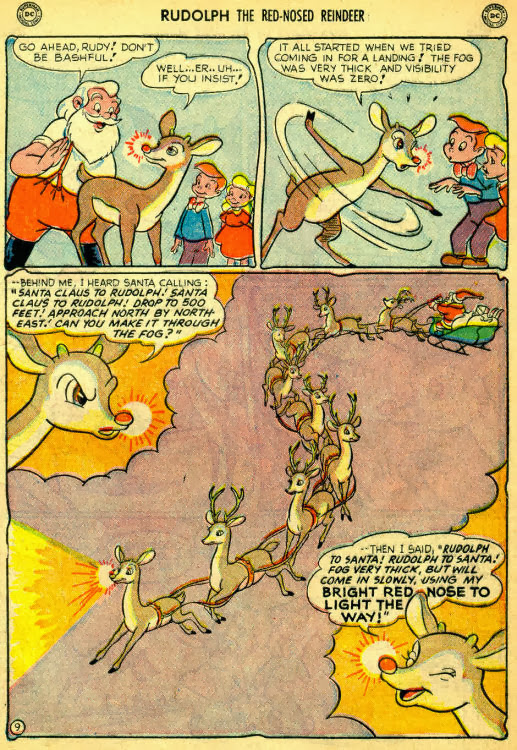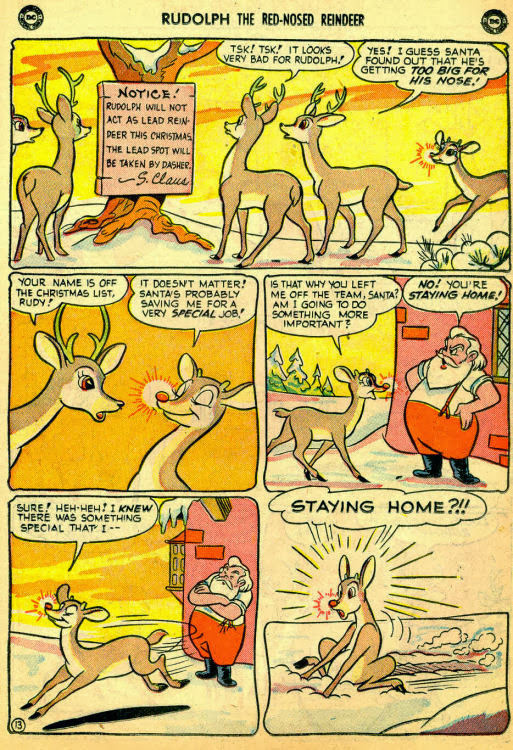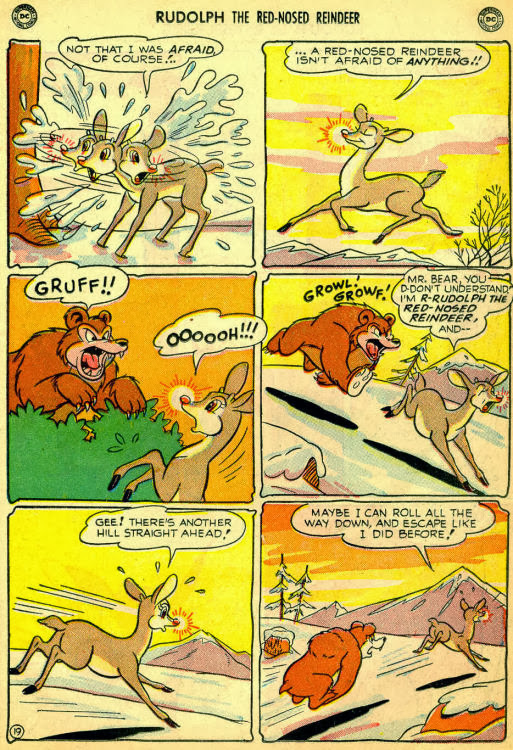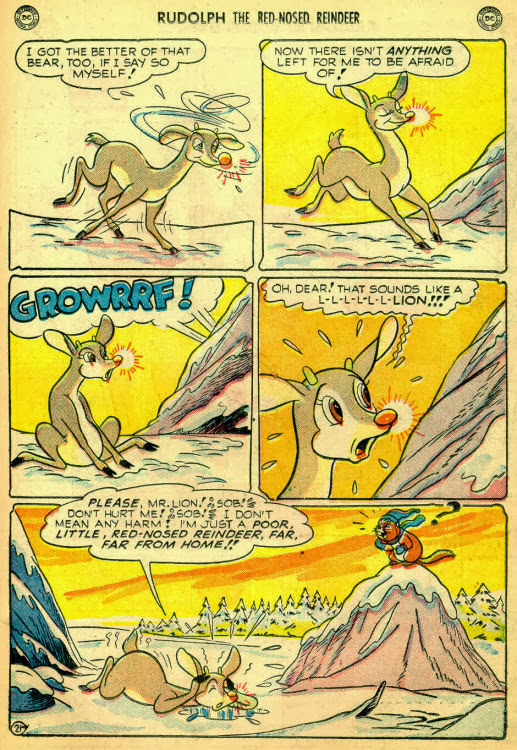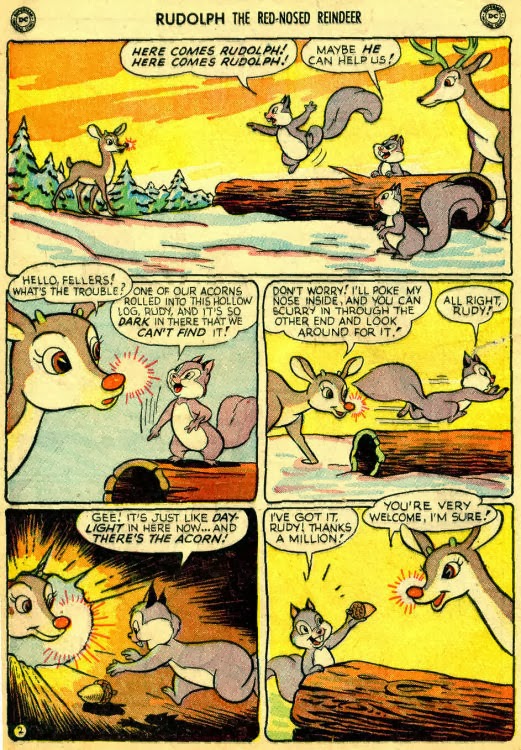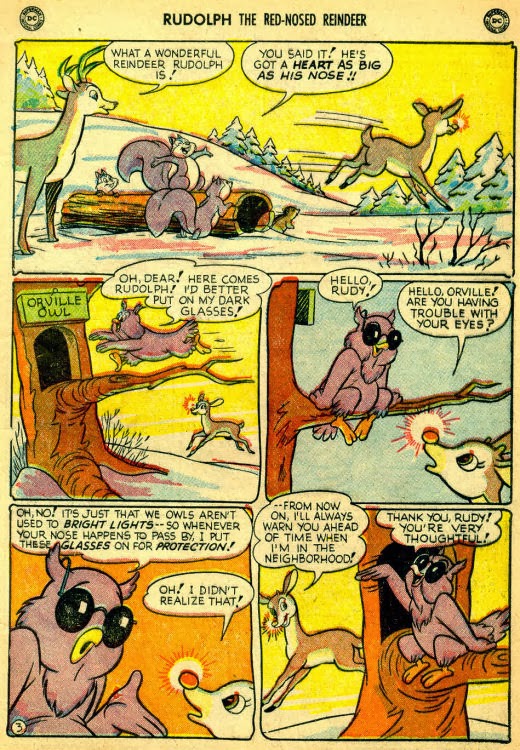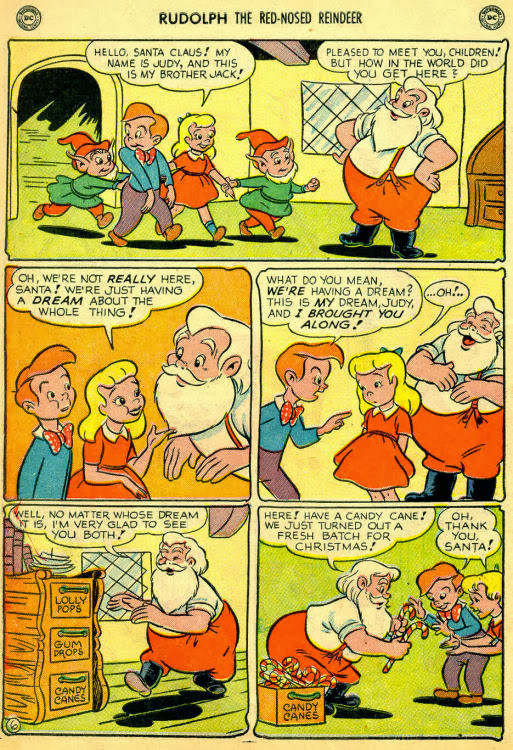As preparations for Christmas proceed, two children, Jack and Judy, make their way to Santa's Workshop.
But their innocent visit will have unintended consequences...
Written by Sy Reit and illustrated by Rube Grossman, this 1950 annual was the first of a series that ran until 1963.
The concept was revived in the tabloid-sized "Treasury" (10" x 14") format in 1972 and was published annually (except in '75 and '77) until 1978.
(Both DC and Marvel experimented in the 1970s with the over-sized format.
They were much bigger than
normal comics with cardstock covers, though the interior pages were printed on the usual comic
book paper stock.)
The series was a more-or-less sequel to the original story (which we presented HERE.) and song.
(The animated TV special that tells a totally-different version of the tale didn't appear until 1964.)
One
thing you'll note is the unique idea of including activity pages as
part of the story, giving us perfect chapter enders and openers in our
serial presentation format.



